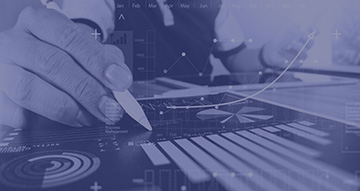About 58% of India’s population is dependent on agriculture as the primary source of livelihood, and Agriculture & the Allied sector contributes about 18% to Gross Value Added in FY20.2 (https://www.ibef.org/industry/agriculture-india.aspx)
There is a large workforce working in the agriculture sector, however, the socio-economic condition of the Indian farmer is dismal. The average monthly farmer income in India is meager (About INR 10,000). Around 80% of farmers in India have small landholdings (1-2 hectares or even less). The largely uneducated farmers often fall prey to the exploits of the middlemen and end up getting low prices from them.1
Government incentivized Minimum Support Prices help the farmer sell directly to the consumer or business but, independently, may be insufficient to protect the farmer from unfair pricing.
Smart technology adoption in agriculture and related activities will give the farmer more accurate information and help him in better farm management planning.
Smart Farming refers to the application of information and technology in agriculture. It carries the potential to revolutionize agriculture through the application of IoT, remote sensors, computer imaging to monitor the crops, geo-positioning systems, precision equipment, drones, or Unmanned Aerial Systems that are powered by cloud and analytical technologies.3 (https://www.wipro.com/analytics/smart-farming-powered-by-analytics/)
In this study, the researchers designed and developed a Deep Learning Model to predict real-time prices of agricultural produce given the demand and supply in the market. The model tested one crop (Paddy) and in one district (Sangrur) in India. Intelligent systems like high-resolution satellite imagery of the area monitored the stage of the crop yield. Deep Learning models were used to classify images as high, medium, or low yield.
Based on the information gathered, the researchers took time series of the paddy crop images and applied regression analysis using variables like rainfall, historical crop yield, and cultivation area that impact the supply of the crop in the market. This potentially helps farmers make price decisions based in real-time and helps them select and sell in areas that will fetch the best price and maximize profits.
References:
1: Gangwar M., Kumar A, Chaudhary P, Mamidanna R.V., Baig Y, ‘Real-Time Commodity Price Prediction Engine,’ 2021
2: https://www.ibef.org/industry/agriculture-india.aspx
3: https://www.wipro.com/analytics/smart-farming-powered-by-analytics/




